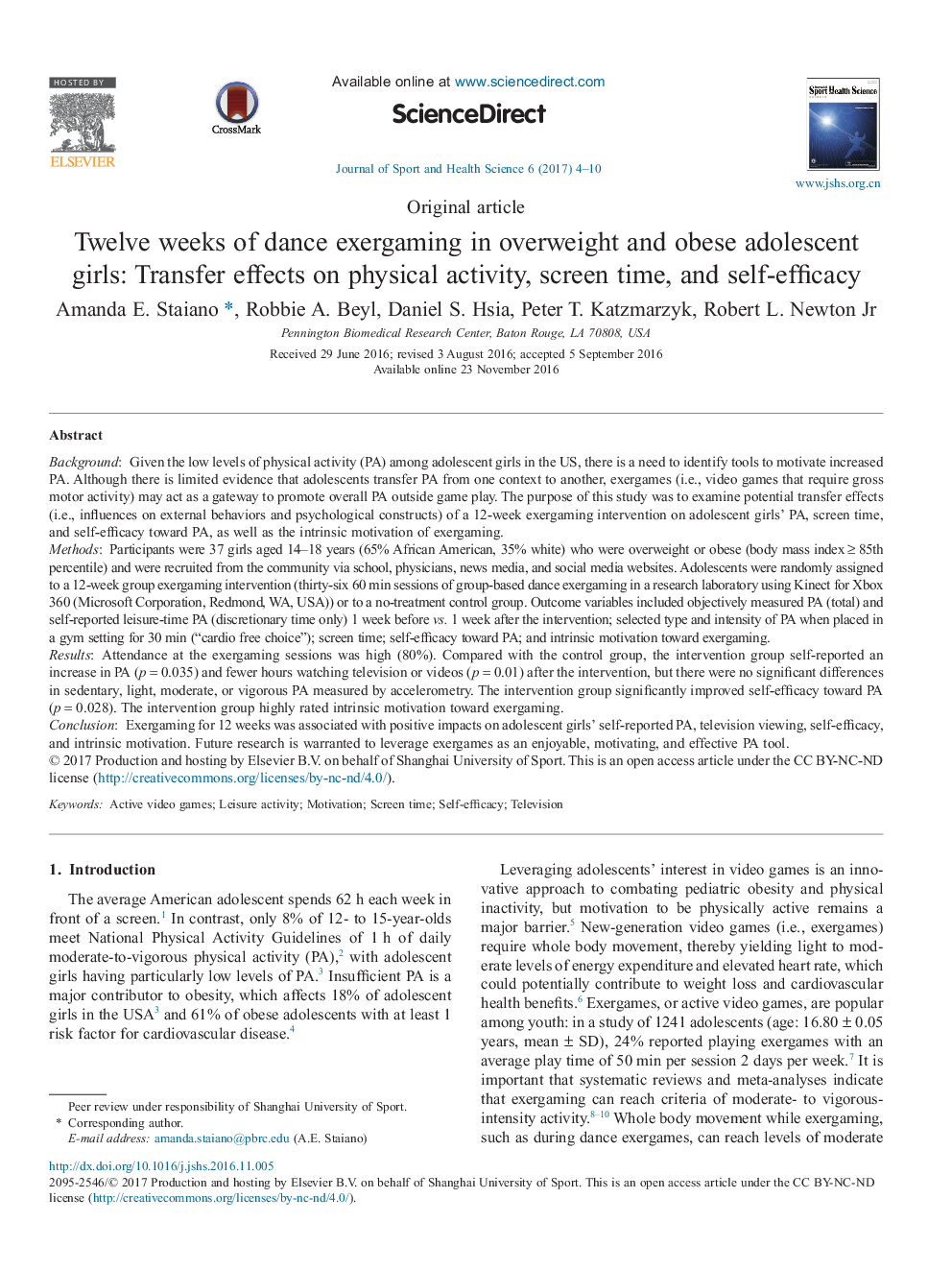| Article ID | Journal | Published Year | Pages | File Type |
|---|---|---|---|---|
| 5122051 | Journal of Sport and Health Science | 2017 | 7 Pages |
BackgroundGiven the low levels of physical activity (PA) among adolescent girls in the US, there is a need to identify tools to motivate increased PA. Although there is limited evidence that adolescents transfer PA from one context to another, exergames (i.e., video games that require gross motor activity) may act as a gateway to promote overall PA outside game play. The purpose of this study was to examine potential transfer effects (i.e., influences on external behaviors and psychological constructs) of a 12-week exergaming intervention on adolescent girls' PA, screen time, and self-efficacy toward PA, as well as the intrinsic motivation of exergaming.MethodsParticipants were 37 girls aged 14-18 years (65% African American, 35% white) who were overweight or obese (body mass indexââ¥â85th percentile) and were recruited from the community via school, physicians, news media, and social media websites. Adolescents were randomly assigned to a 12-week group exergaming intervention (thirty-six 60âmin sessions of group-based dance exergaming in a research laboratory using Kinect for Xbox 360 (Microsoft Corporation, Redmond, WA, USA)) or to a no-treatment control group. Outcome variables included objectively measured PA (total) and self-reported leisure-time PA (discretionary time only) 1 week before vs. 1 week after the intervention; selected type and intensity of PA when placed in a gym setting for 30âmin (“cardio free choice”); screen time; self-efficacy toward PA; and intrinsic motivation toward exergaming.ResultsAttendance at the exergaming sessions was high (80%). Compared with the control group, the intervention group self-reported an increase in PA (pâ=â0.035) and fewer hours watching television or videos (pâ=â0.01) after the intervention, but there were no significant differences in sedentary, light, moderate, or vigorous PA measured by accelerometry. The intervention group significantly improved self-efficacy toward PA (pâ=â0.028). The intervention group highly rated intrinsic motivation toward exergaming.ConclusionExergaming for 12 weeks was associated with positive impacts on adolescent girls' self-reported PA, television viewing, self-efficacy, and intrinsic motivation. Future research is warranted to leverage exergames as an enjoyable, motivating, and effective PA tool.
